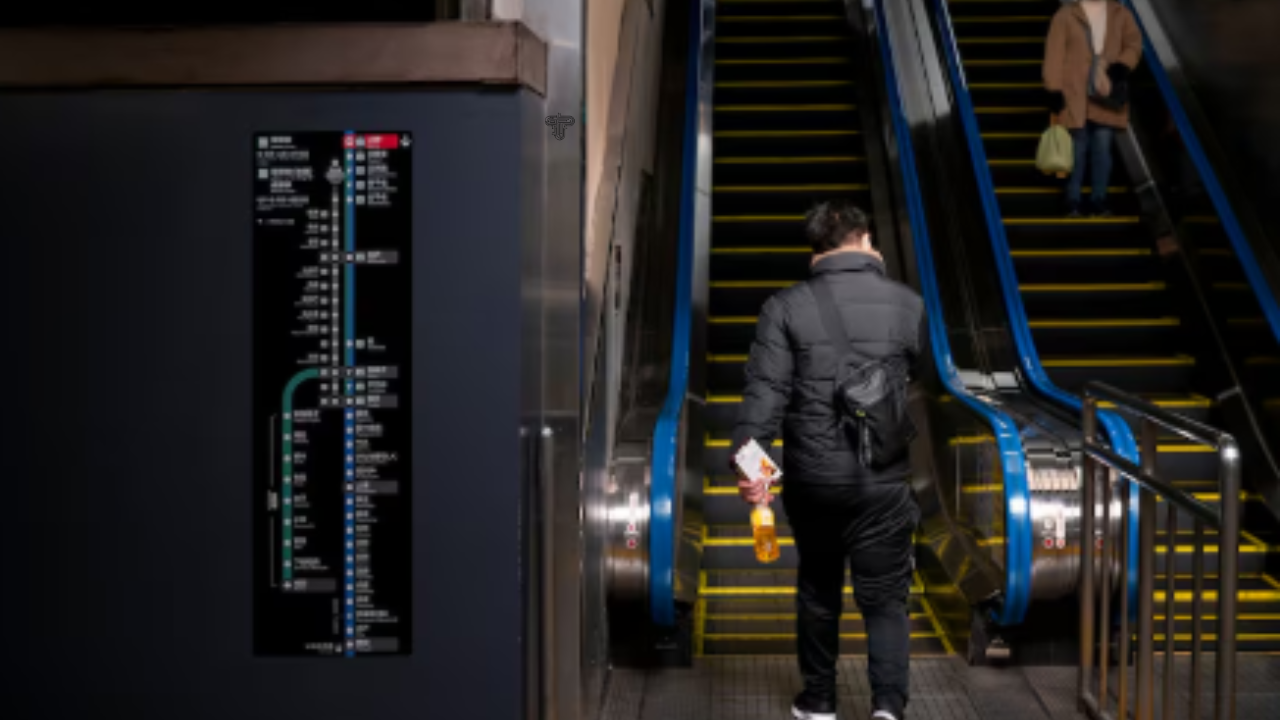ASME A17.1 Overview: The Safety Code for Elevators & Escalators
When people ride in an elevator or step onto an escalator, few give thought to the rigorous safety requirements behind that seemingly simple motion. Yet behind each smooth ride is a framework of rules, engineering judgments, inspections, and compliance mandates. At the heart of that framework in the U.S. (and in harmonized form with Canada) is ASME A17.1, the Safety Code for Elevators and Escalators. In this article, we provide a detailed, human-written overview of ASME A17.1, exploring its scope, structure, key requirements, evolution, challenges, and real-world importance.
Introduction: What Is ASME A17.1?
ASME A17.1, formally titled the Safety Code for Elevators and Escalators, is a code developed by the American Society of Mechanical Engineers (ASME) that sets minimum safety standards governing the design, construction, installation, operation, inspection, testing, maintenance, alteration, and repair of elevators, escalators, moving walks, material lifts, dumbwaiters, and related equipment. It represents an authoritative baseline: jurisdictions may adopt or adapt it (or adopt older editions), but deviations that reduce safety are typically disallowed. Its primary goal is the protection of life and limb, alongside promoting public welfare.
Due to its comprehensive coverage and critical safety functions, ASME A17.1 is widely referenced by building codes, regulatory bodies, and elevator professionals. Its provisions are carefully revised over time to reflect technological advances, new hazards, and lessons learned from incidents.
Scope, Harmonization & Editions
Scope of ASME A17.1
One of the strengths of ASME A17.1 is its broad but clearly defined scope. It does not cover every form of vertical transport—rather, it is focused on systems that use cars, platforms, or hoisting mechanisms in or adjacent to building structures. Specifically, it addresses:
- Elevators (electric, hydraulic, and special types)
- Escalators and moving walks
- Dumbwaiters and material lifts (including those with automatic transfer devices)
- Associated equipment: hoistways, rooms, machine spaces, control systems, safety and signal systems
Conversely, ASME A17.1 generally excludes certain devices covered by other standards, such as personnel hoists (covered under ANSI A10.4), platform lifts or stairway chairlifts (under ASME A18.1), and certain speciality transport devices.
Harmonization with CSA B44 & Code Editions
Since the 2000s, ASME A17.1 has been harmonized with Canada’s CSA B44 standard, so that a single combined document (ASME A17.1 / CSA B44) applies across much of North America. This approach streamlines adoption and ensures consistent safety ceilings across national borders.
Over time, multiple editions and supplements have been published. The 2019 edition is one such authoritative version, and the 2022 edition was anticipated to succeed it (becoming effective six months after issuance). Each revision introduces updates in response to evolving technology, emerging risk domains, and stakeholder input.
Structure of the Code: Part by Part
To make navigation and compliance manageable, ASME A17.1 is subdivided into parts (sections) aligned with system types and general requirements. The major parts include:
- Part 1 – General Requirements & Definitions
Foundational definitions, code scope, interpretations, and general rules for safe design. - Part 2 – Electric Elevators
Covers traction, geared and gearless systems, components, drive systems, and safety devices. - Part 3 – Hydraulic Elevators
Addresses hydraulic actuation, jacks, fluid handling, and safety against hydraulic failure. - Part 4 – Elevators Other than Electric or Hydraulic
Special or alternative drive types outside the norm. - Part 5 – Special Application Elevators
Elevators with atypical demands (e.g. limited space, special speeds). - Part 6 – Escalators, Moving Walks & People Movers
Covers step geometry, balustrades, drive systems, handrails, and safety devices specific to escalators. - Part 7 – Dumbwaiters & Material Lifts
Handling of small loads, hoisting within buildings for goods. - Part 8 – Other General Requirements
Covers aspects common across systems (fire protection, electrical systems, ventilation, emergency operation). - Part 9 – Reference Codes, Standards & Specifications
Lists applicable external standards (e.g. electrical, structural, fire, building codes) that ASME A17.1 references or mandates compliance with.
This partitioned structure enables practitioners to consult only the relevant sections for their specific elevator or escalator type, while still being aware of cross-cutting requirements.
Key Technical & Safety Requirements
The core of ASME A17.1 lies in its technical and safety mandates. Below are some of the major themes and provisions embedded in the code.
Design & Construction
- Hoistway Enclosure, Fire Ratings, and Access: Elevator hoistways must be enclosed and often require fire ratings. Access to hoistways via key access or emergency means is prescribed to facilitate rescue or service.
- Structural Elements & Supports: Car frames, guide rails, counterweights, and buckling of components must all satisfy allowable stress and safety factors, as well as withstand dynamic loads.
- Braking & Overspeed Protection: Governors, safeties, and brake systems must prevent uncontrolled descent or excessive speed.
- Electrical Systems & Controls: Control circuits, power supply, redundancy, emergency power backup, and fault detection systems are rigorously stipulated.
Operation, Maintenance & Inspection
- Periodic Testing & Maintenance: Regular inspection, load tests, performance tests, and maintenance regimens are mandated.
- Safety Devices & Door Systems: Door interlocks, sensors, safeties on closing, dwell times, and reversal devices to prevent entrapment.
- Emergency Signalling and Communication: For elevators rising 18 m or more, a means of communication to building emergency personnel must exist, with visual and voice facilities, auto power switching, and related requirements.
- Flood, Fire & Rescue Provisions: Elevators must incorporate flood protection (if applicable), provisions for fire service operation, fire-resistive constructions, and rescue operation protocols.
Escalator-Specific Safety
In Part 6, ASME A17.1 delineates requirements unique to escalators and moving walks:
- Step Profile, Comb Plate Safety, and Skirt Panel Clearances
- Handrail Velocity Matching & Tensioning
- Balustrade Strength, Guarding, and Illumination
- Emergency Stop Devices & Overspeed Detection
- Maintenance Access, Clearance, and Walkway Requirements
- Electrical safety, grounding, and redundant power systems
These escalator elements are critical: unlike elevator systems that stop at specific floors, escalators are continuous, so even small mechanical misalignments or debris can pose serious hazards if left unchecked.
Recent Updates & Emerging Areas in the 2022 Edition
The evolution of ASME A17.1 continues with each edition, reflecting new risks, technologies, and system behaviours. Some notable updates in the 2022 edition include:
- Cybersecurity Requirements: With modern elevators becoming increasingly networked, security for control systems is now a critical safety concern.
- Remote Interaction & Operation: Provisions for remote testing, remote diagnostics, or operation under controlled conditions.
- Flood Protection Enhancements: Elevators in flood-prone zones must have safeguards against water ingress, electrical failures, or damage.
- Alternate Testing Methods for Emergency Brakes: Flexibility in methods to validate safety systems under test conditions.
- Door Position Monitoring & Phase II Upgrades: More advanced detection of door status and signal phase behaviours in emergency operations.
These changes demonstrate how ASME A17.1 continues to evolve in response to the digital, climate, and resilience challenges of the 21st century.
Why ASME A17.1 Matters: Risk Reduction & Stakeholder Impacts
Though codes may seem dry, ASME A17.1 plays a pivotal role in the safety ecosystem. Below are some reasons it matters.
Protecting Lives & Preventing Catastrophes
Elevators and escalators carry millions daily. A failure in braking, door systems, signal lines, or structural components could result in loss of life. By prescribing redundant systems, fail-safe devices, and strict testing, ASME A17.1 reduces the probability of catastrophic failures.
Uniform Benchmark for Regulation & Compliance
Local building codes often reference a specific edition of ASME A17.1. Having a well-recognised, widely accepted code means that elevator manufacturers, designers, and inspectors have a uniform benchmark. Without such a standard, variations in safety level across jurisdictions could be severe.
Facilitating Innovation & Technology Adoption
While the code imposes minimums, it also supports innovation. New drive systems, sensor technologies, digital control systems, and condition monitoring can be integrated as long as they meet or exceed safety performance standards. The inclusion of cybersecurity and remote systems in recent editions is evidence of that evolution.
Reducing Liability & Ensuring Accountability
When accidents or incidents occur, compliance (or noncompliance) with ASME A17.1 often becomes a key legal and insurance focus. Meeting code requirements demonstrates due diligence; failure to do so can exacerbate liability.
Enabling Maintenance, Upgrades & Retrofitting
As buildings age, their vertical transport systems must be maintained and modernized. ASME A17.1 offers a roadmap for safe alterations, retrofits, and ongoing testing. It serves not just new installations but also guides the lifecycle of systems.
Challenges, Limitations & Critiques
Even a robust code like ASME A17.1 faces challenges when applied in practice:
- Jurisdictional Adoption Delay or Version Lag: Some states or municipalities adopt older versions, delaying code modernization in practice.
- Interpretation & Enforcement Gaps: The code itself sometimes leaves room for interpretation, which can lead to inconsistent enforcement or loopholes.
- Cost Constraints vs Safety: In some low-budget projects, stakeholders may attempt to trade off features for cost, risking safety margins.
- Technology Pace vs Code Revision Cycle: Emerging technologies (e.g. AI control, IoT sensors) may advance faster than code cycles, leaving gray zones.
- Legacy Systems & Nonconformity: Many elevators predate modern code editions. Retrofitting them to full compliance is often expensive or structurally difficult.
Despite these challenges, the code’s existence and ongoing refinement help guide mitigation efforts and push the industry toward safer practices.
Best Practices for Implementers & Stakeholders
To make ASME A17.1 truly effective, various players in the elevator/escalator ecosystem should follow some best practices:
- Designers and manufacturers should aim for code-plus solutions (i.e. exceed minimums), especially in critical safety areas
- Regulatory agencies should maintain up-to-date adoption of the latest safe editions and provide clear interpretative guidance
- Inspectors and maintenance teams must rigorously document tests, defects, repairs, and deviations
- Building owners should prioritize preventative maintenance and not defer safety upgrades
- Training and certification of technicians must include awareness of code changes, especially in new areas like cybersecurity
By aligning engineering, operational, and regulatory thinking around ASME A17.1, vertical transportation systems remain safe, reliable, and evolving.
Tech Blaster
Conclusion
In summary, ASME A17.1 is a foundational, living code that plays a central role in elevator and escalator safety across North America. From specifying structural limits and mechanical safeguards to governing inspection routines, communication systems, and even cybersecurity, it forms the backbone of trust in vertical transport systems. As technology evolves and new risks emerge, ASME A17.1 continues to be refined—ensuring that when a passenger steps into a car or onto a moving staircase, their ride is governed by the highest known standards of safety.





